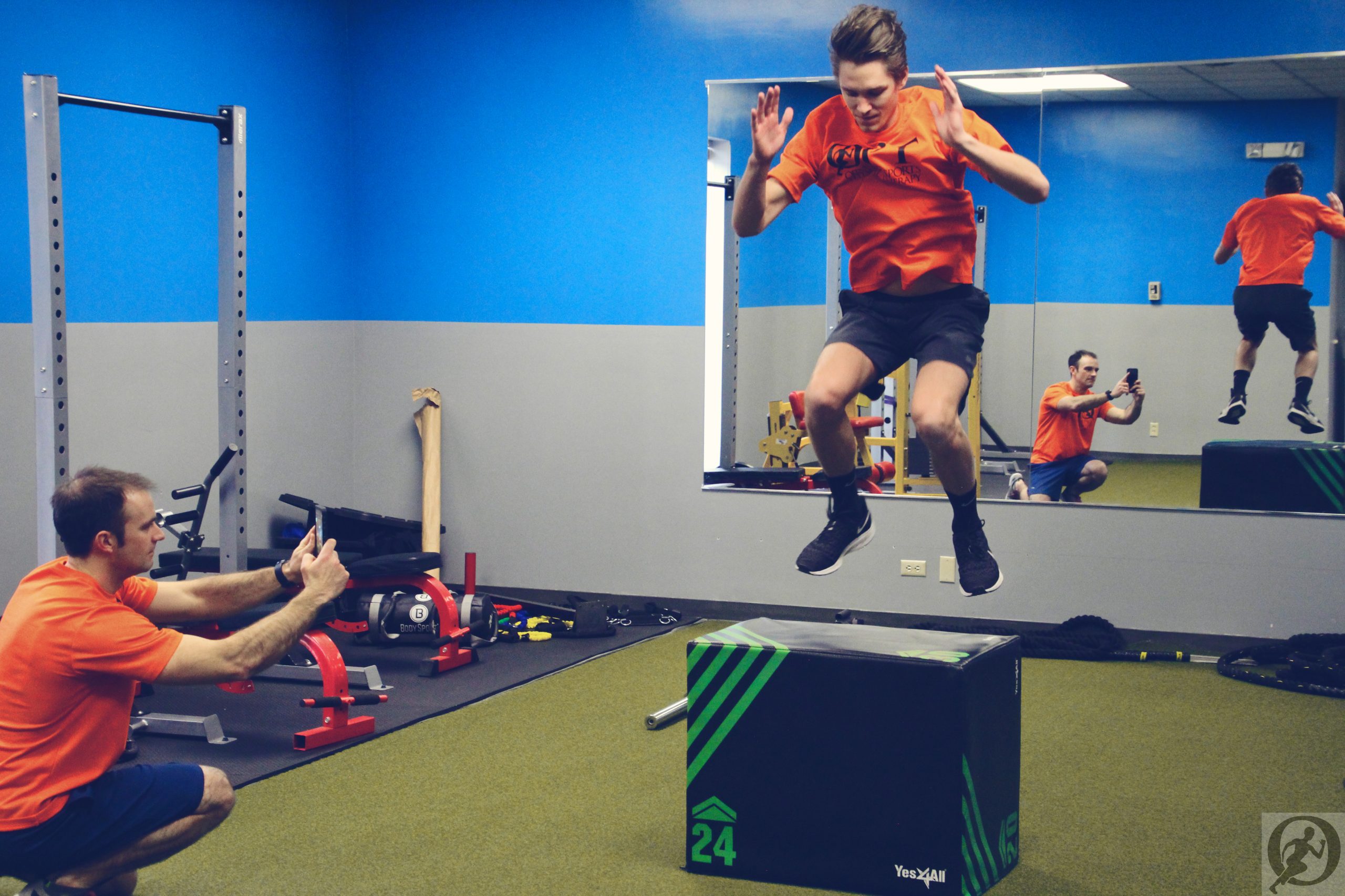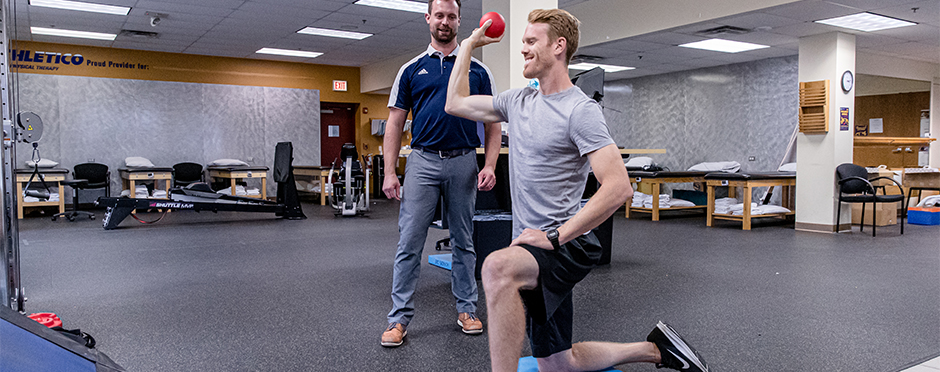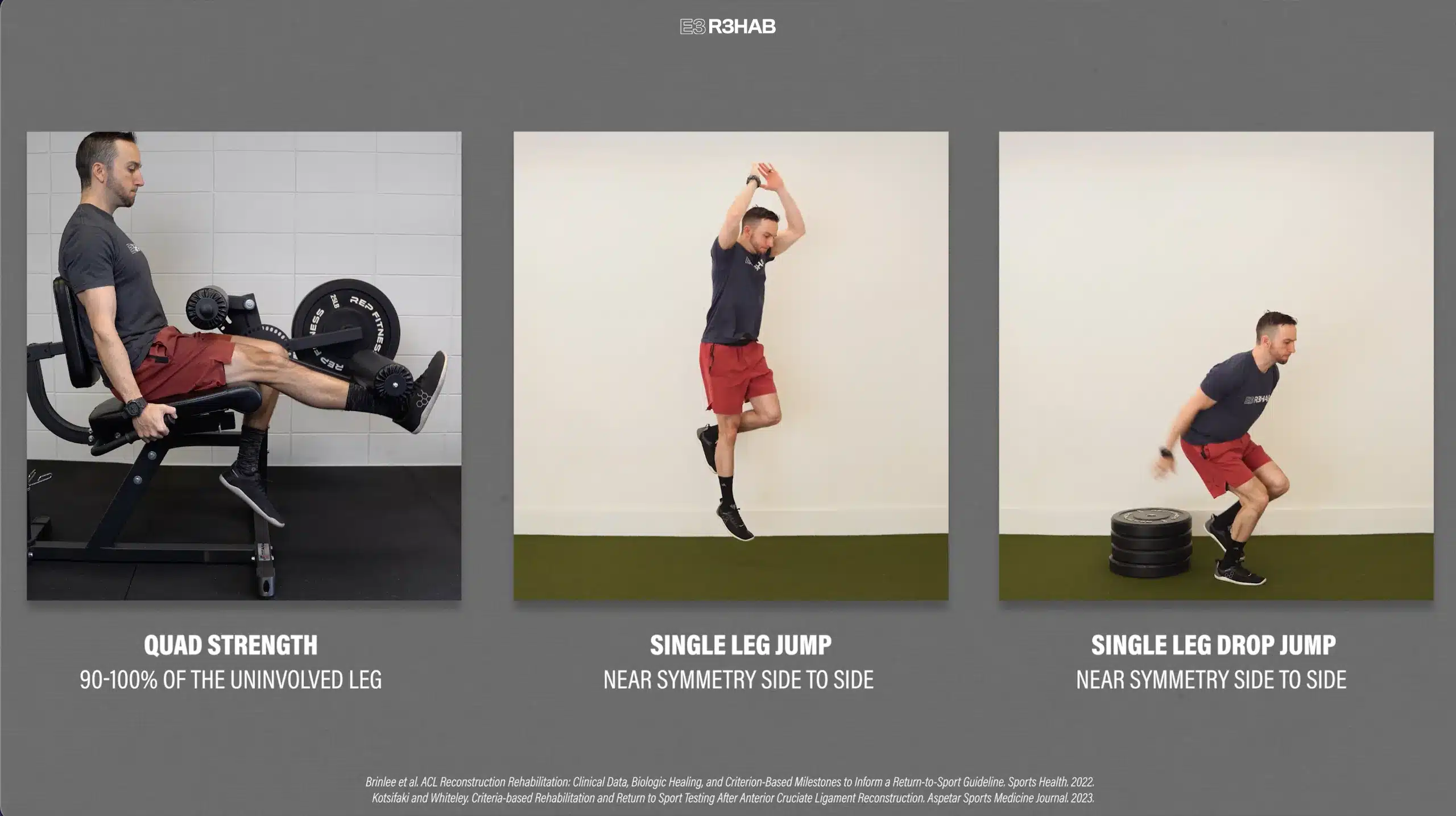Returning to sport after an injury can be challenging. Physical therapy plays a crucial role in this journey.
Sports injuries can sideline athletes, disrupting their routines and goals. Return to sport physical therapy focuses on helping athletes regain strength, flexibility, and confidence. This specialized therapy tailors recovery plans to an athlete’s specific needs. It combines exercises, treatments, and education to ensure a safe return to the game.
Understanding the essentials of this therapy can empower injured athletes and their support systems. In this blog, we will explore how return to sport physical therapy aids recovery and promotes long-term health. Whether you’re an athlete or a coach, this guide will provide valuable insights into the recovery process.
Introduction To Sport Physical Therapy
Sport physical therapy is a specialized field. It focuses on helping athletes recover from injuries. This type of therapy aims to improve performance and prevent future injuries. It is an essential part of an athlete’s life.
Importance For Athletes
Sport physical therapy is crucial for athletes. It helps them get back to their sport quickly. Athletes often face injuries due to intense training and competitions. Without proper care, these injuries can worsen. Physical therapy helps in early detection and treatment.
| Reason | Importance |
|---|---|
| Injury Recovery | Helps athletes heal faster and safer |
| Performance Enhancement | Improves strength and flexibility |
| Injury Prevention | Reduces the risk of future injuries |
Key Benefits
Sport physical therapy offers many benefits. Some of the key benefits include:
- Pain Management: Helps reduce pain through targeted exercises.
- Improved Mobility: Enhances movement and flexibility.
- Strength Building: Focuses on strengthening weak muscles.
- Personalized Care: Tailored therapy plans for each athlete.
- Mental Health: Supports mental well-being during recovery.
These benefits help athletes stay in top shape. They can train harder and perform better. Sport physical therapy is not just for injured athletes. It is also for those who want to maintain their health and avoid injuries.
Common Sports Injuries
Sports injuries are common among athletes and active individuals. Proper physical therapy helps in recovery and prevents future injuries. Understanding the common sports injuries is vital for effective treatment and prevention.
Types Of Injuries
There are various types of sports injuries. Sprains and strains are very common. Sprains involve ligaments, while strains affect muscles or tendons. Another frequent injury is a fracture. Fractures can happen due to high-impact activities or falls. Dislocations occur when bones are forced out of their normal positions. Athletes also suffer from tendonitis, which is inflammation of the tendons. Concussions are brain injuries caused by blows to the head. Each injury requires specific treatment and care.
Causes And Prevention
Sports injuries have several causes. Overuse of muscles and joints often leads to injuries. Lack of proper warm-up can strain muscles. Using improper techniques or equipment increases the risk. External factors like uneven surfaces can also cause injuries.
Preventing sports injuries is crucial. Always warm up before activities. Use the right techniques and equipment. Maintain good physical condition. Stay hydrated and take breaks to avoid overuse. Listen to your body and seek medical advice if needed. These steps help reduce the risk of injuries.
Initial Assessment
When starting Return to Sport Physical Therapy, the initial assessment is crucial. It sets the foundation for the recovery journey. This step helps understand the athlete’s condition and needs. It also provides a clear picture of the starting point.
Evaluation Techniques
Physical therapists use various evaluation techniques during the initial assessment. They check for range of motion, strength, and flexibility. They also assess balance and coordination. These techniques help identify any underlying issues. Each technique plays a role in creating a customized plan.
Setting Recovery Goals
Setting recovery goals is essential in the initial assessment. Goals provide direction and motivation. They help measure progress and adjust the plan as needed. Therapists work with athletes to set realistic and achievable goals. Clear goals make the recovery journey more focused and effective.
Rehabilitation Programs
Rehabilitation programs are essential for athletes returning to their sport after an injury. These programs focus on restoring strength, flexibility, and confidence. They help athletes get back to their peak performance safely and effectively.
Customized Plans
Each athlete is unique. So, rehabilitation programs must be tailored to individual needs. Customized plans address specific injuries, fitness levels, and goals. These plans ensure a focused and effective recovery. They also help in preventing future injuries by addressing weak areas.
Phases Of Rehabilitation
Rehabilitation programs typically follow several phases. The initial phase focuses on pain management and reducing inflammation. Gentle exercises help improve range of motion. The second phase includes strength training and more intense exercises. This helps in rebuilding muscle and stamina.
The final phase prepares the athlete for a full return to sport. It includes sport-specific drills and activities. This phase ensures the athlete can handle the demands of their sport. Progress is monitored closely at each phase. Adjustments are made as needed for optimal recovery.
Strength And Conditioning
Strength and conditioning are crucial components of return to sport physical therapy. These aspects help athletes regain their physical capabilities and prevent future injuries. Proper strength and conditioning programs ensure that the body can handle the demands of the sport. They focus on building muscle strength, endurance, and overall fitness.
Importance Of Strength
Building strength is vital for athletes recovering from an injury. Strong muscles support joints and reduce the risk of re-injury. Improved strength enhances performance in various sports activities. It allows athletes to execute movements with greater power and efficiency. Stronger muscles also aid in better balance and coordination.
Strength training includes exercises like weight lifting, resistance bands, and body-weight exercises. These exercises target different muscle groups, ensuring balanced development. A well-rounded strength program helps athletes return to their sport with confidence.
Conditioning Exercises
Conditioning exercises are essential for improving cardiovascular fitness. These exercises help athletes maintain high energy levels during their sport. Better conditioning allows for longer periods of activity without fatigue. It also aids in quicker recovery after intense physical exertion.
Common conditioning exercises include running, cycling, and swimming. Interval training is also effective for improving endurance and stamina. These exercises increase heart rate and boost overall cardiovascular health. A good conditioning program prepares athletes for the physical demands of their sport. It ensures they can perform at their best, game after game.

Credit: optimalsportspt.com
Functional Training
Functional Training is vital in return to sport physical therapy. It aims to replicate real-life movements. This helps athletes regain full function and reduce injury risk. Functional training involves exercises that mimic the movements of the sport. This ensures athletes are ready for the demands of their specific sport.
Sport-specific Drills
Sport-specific drills focus on movements and skills unique to each sport. For a basketball player, this might include dribbling, shooting, and defensive slides. For a soccer player, drills may involve passing, shooting, and agility exercises.
- Basketball: Dribbling, shooting, defensive slides
- Soccer: Passing, shooting, agility drills
- Tennis: Serving, volleying, lateral movements
These drills help athletes improve their sport-specific skills. They also ensure they are prepared to return to play safely and effectively.
Enhancing Performance
Functional training not only aids in recovery but also enhances overall performance. It helps improve strength, flexibility, and coordination. This training includes exercises that build muscle and endurance specific to the sport.
| Exercise | Benefit |
|---|---|
| Squats | Increase leg strength and stability |
| Planks | Improve core strength and stability |
| Lunges | Enhance balance and coordination |
These exercises target the muscles used in the sport. This ensures a well-rounded and effective return to play.
Functional training is crucial for athletes. It prepares them for the physical demands of their sport. It reduces the risk of future injuries and enhances performance.
Mental Health In Recovery
Recovering from a sports injury is not just a physical battle. It also impacts your mental health. The journey back to sport can be long and challenging. It’s crucial to address the mental aspects of recovery to ensure a smooth and successful return to the game you love.
Psychological Impact
A sports injury can be a significant setback. It affects your confidence and self-esteem. You might feel frustrated, angry, or even depressed. The fear of re-injury can also weigh heavily on your mind. This emotional turmoil can slow down your recovery process.
Understanding these feelings is the first step. Acknowledging that it’s okay to feel this way can help you cope better. You are not alone. Many athletes go through similar struggles.
Coping Strategies
Developing effective coping strategies is essential. Setting realistic goals can provide a sense of direction. Celebrate small victories. They will keep you motivated.
Staying connected with your team and coaches is also important. Their support can boost your morale. Consider talking to a sports psychologist. They can offer valuable insights and techniques to manage stress and anxiety.
Mindfulness and relaxation exercises can also be beneficial. They help in keeping your mind calm and focused. Regular practice can improve your mental resilience.
Finally, maintain a positive outlook. Visualize your return to the sport. Picture yourself performing well and enjoying the game. This mental imagery can enhance your recovery process.

Credit: www.athletico.com
Return To Play Criteria
Return to play criteria are vital for athletes recovering from injuries. These criteria ensure a safe and effective transition back to sports. They focus on the athlete’s readiness and minimize the risk of re-injury. Let’s explore two key aspects: safety assessments and gradual return.
Safety Assessments
Safety assessments are crucial for determining if an athlete is ready to return. These assessments evaluate physical and mental readiness. Physical tests include strength, flexibility, and endurance checks. Mental readiness involves confidence and fear of re-injury. Both are essential for a safe return.
Doctors and physical therapists use these assessments to make informed decisions. They ensure that the athlete can perform without pain or risk. This step is non-negotiable in the return to play criteria.
Gradual Return
A gradual return helps athletes ease back into their sport. This method reduces the chance of re-injury. It involves slowly increasing the intensity of activities. Starting with light exercises and moving to more demanding ones. This allows the body to adapt and recover fully.
Physical therapists design personalized plans for each athlete. They monitor progress and adjust activities as needed. This careful approach ensures that the athlete regains full functionality. Patience is key here. Rushing can lead to setbacks and longer recovery times.
Preventing Re-injury
Returning to sports after an injury is a significant achievement. Yet, the journey does not end there. Preventing re-injury is crucial for long-term success. This is where Return to Sport Physical Therapy plays a vital role. By following specific programs and tips, athletes can stay on track and avoid setbacks.
Maintenance Programs
Maintenance programs are essential for athletes post-recovery. These programs focus on strengthening the areas prone to injury. They also ensure that the body remains balanced and strong. Here’s what a good maintenance program might include:
- Regular Strength Training: Focus on both major and minor muscle groups.
- Flexibility Exercises: Keep muscles and joints flexible and mobile.
- Cardiovascular Workouts: Maintain overall fitness without overloading injured areas.
- Balance and Coordination Drills: Improve body awareness and prevent falls.
Consistency is key. Athletes should integrate these exercises into their routine to maintain their health and performance.
Injury Prevention Tips
Preventing injuries involves more than just physical strength. Awareness and proper techniques are also important. Here are some practical injury prevention tips:
- Warm-Up Properly: Always start with a warm-up to prepare your body.
- Use Correct Form: Ensure you use the right techniques during activities.
- Stay Hydrated: Drink enough water to keep your body functioning well.
- Listen to Your Body: Pay attention to pain or discomfort, and rest when needed.
- Wear Proper Gear: Use appropriate clothing and equipment for your sport.
Following these tips can greatly reduce the risk of re-injury. It allows athletes to enjoy their sport safely and effectively.

Credit: pt-cpr.com
Success Stories
Success stories in return to sport physical therapy inspire many athletes. They show the power of dedication and expert guidance. Athletes share their journeys, highlighting the effectiveness of tailored therapy.
Athlete Testimonials
Athletes often face challenges after an injury. Many share their positive experiences with return to sport physical therapy. For instance, John, a basketball player, regained full mobility after a severe ankle sprain. He credits his therapist for his swift recovery. “I never thought I would play again,” he says. “But my therapist’s plan worked wonders.”
Another athlete, Maria, a soccer player, tore her ACL. She feared her career was over. Her therapist provided a structured program. Maria says, “I followed every step. Now, I’m back on the field, stronger than before.”
Inspiring Comebacks
Many athletes achieve remarkable comebacks through physical therapy. Take Alex, a marathon runner. He suffered a stress fracture. Through rigorous therapy sessions, he made a full recovery. Alex completed his next marathon with a personal best time. His story encourages others facing similar injuries.
Emily, a gymnast, dislocated her shoulder. Her therapist developed a comprehensive plan. Emily’s dedication paid off. She returned to competition, winning several medals. Her journey is a testament to the impact of effective therapy.
These success stories highlight the transformative power of return to sport physical therapy. They motivate injured athletes to pursue recovery with hope and determination.
Frequently Asked Questions
What Is Return To Sport Physical Therapy?
Return to sport physical therapy helps athletes recover from injuries. It focuses on regaining strength, flexibility, and overall fitness. The goal is to safely return athletes to their sport.
How Long Does Return To Sport Therapy Take?
The duration varies based on the injury’s severity. Generally, it can take several weeks to months. Individual progress also plays a significant role.
What Exercises Are Included In Return To Sport Therapy?
Exercises include strength training, balance drills, and flexibility exercises. Sport-specific movements are also incorporated. Each program is tailored to the athlete’s needs.
Why Is Return To Sport Therapy Important?
It ensures athletes recover fully and safely. Proper therapy helps prevent re-injury and improves performance. It also boosts confidence in their physical abilities.
Conclusion
Returning to sport physical therapy can be a key step. It helps athletes regain strength and confidence. The process ensures safe and effective recovery. Athletes can resume their favorite activities sooner. Remember, patience and consistency are vital. Trust your therapist and follow the plan.
Your journey back to sports will be rewarding. Stay positive and focused. Your hard work will pay off. Embrace the process and enjoy your return.



